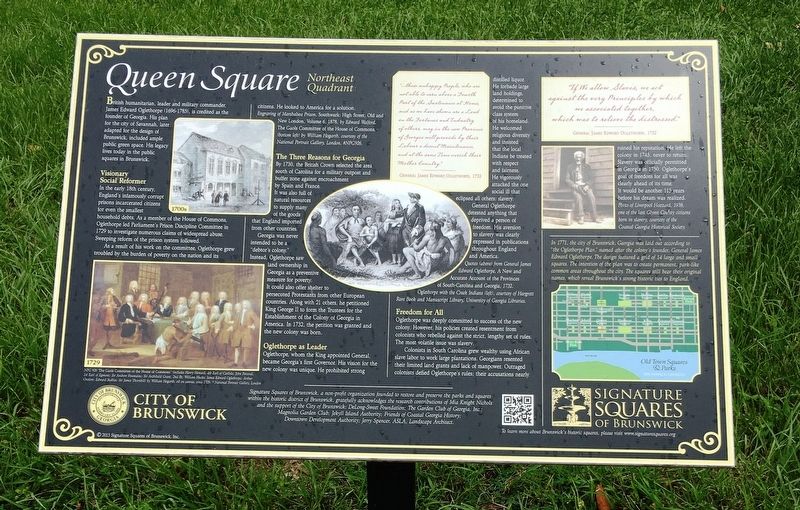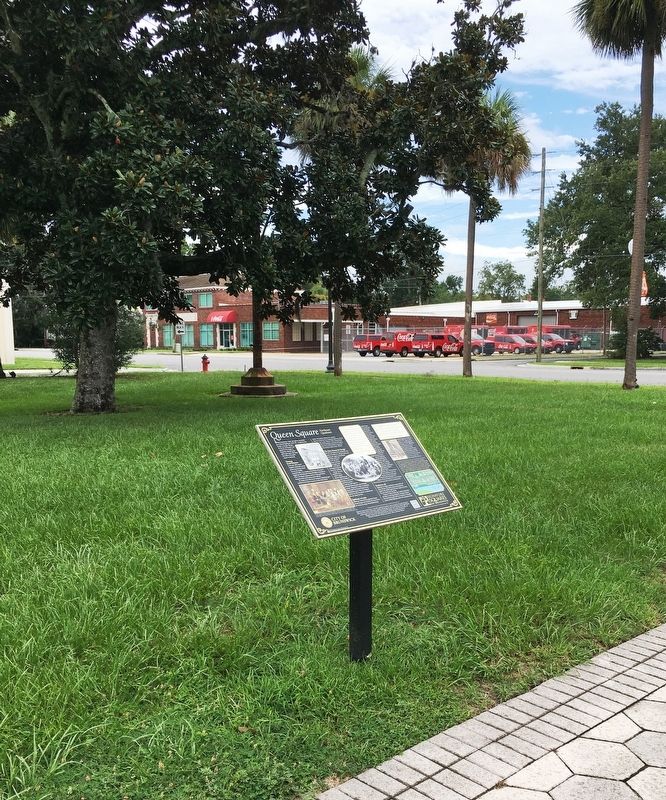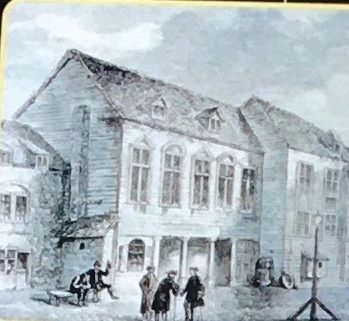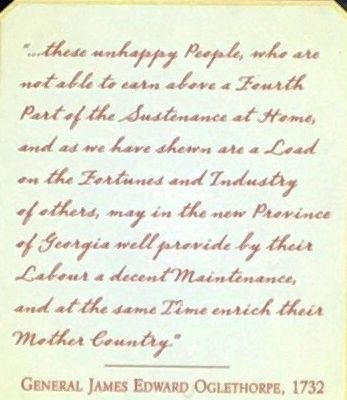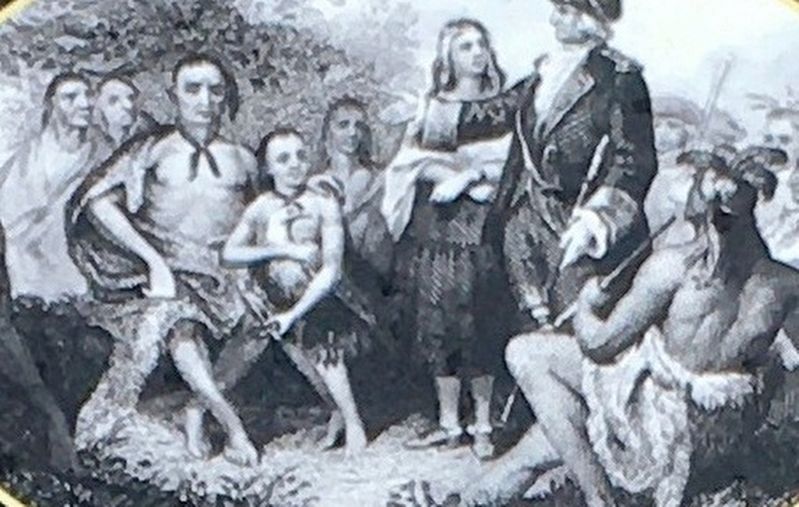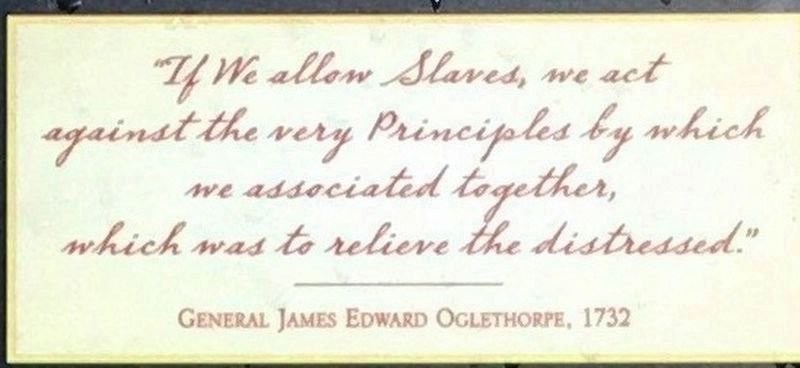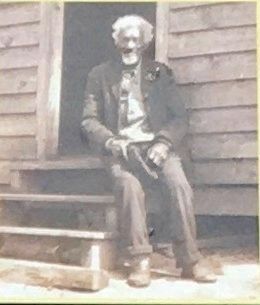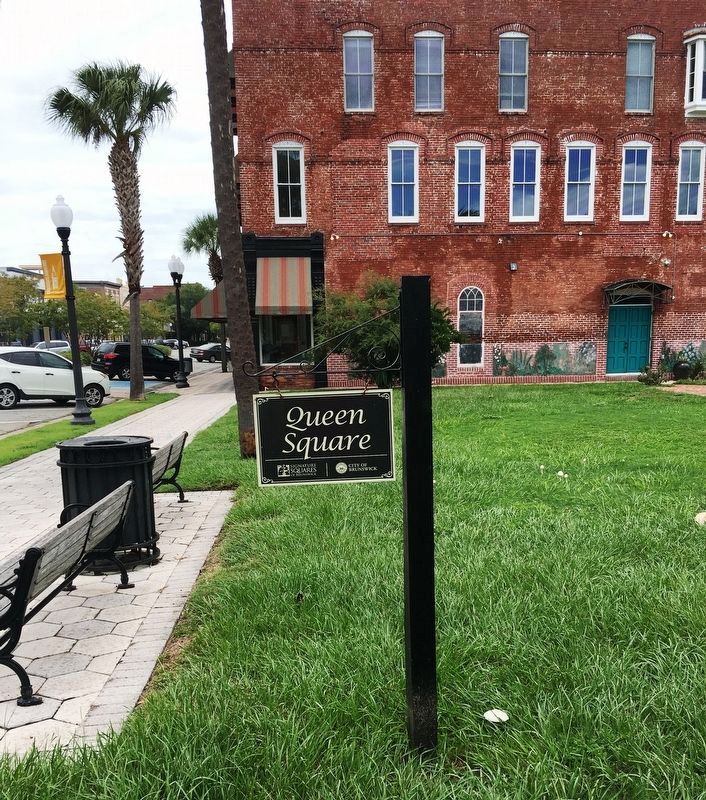Brunswick in Glynn County, Georgia — The American South (South Atlantic)
Queen Square
Northeast Quadrant
— City of Brunswick —
British humanitarian, leader and military commander, James Edward Oglethorpe (1696-1785), is credited as the founder of Georgia. His plan for the city of Savannah, later adapted for the design of Brunswick, included ample public green space. His legacy lives today in the public squares in Brunswick.
Visionary Social Reformer
In the early 18th century, England’s infamously corrupt prisons incarcerated citizens for even the smallest household debts. As a member of the House of Commons , Oglethorpe led Parliament’s Prison Discipline Committee in 1729 to investigate numerous claims of widespread abuse. Sweeping reform of the prison system followed.
As a result of his work on the committee, Oglethorpe grew troubled by the burden of poverty on the nation and its citizen. He looked to America for a solution. Engraving of Marshalsea Prison, Southwark: High Street, Old and New London, Volume 6, 1878, by Edward Walford. The Goals Committee of the House of Commons (bottom left) by William Hogarth, courtesy of the National Portrait, London, #NPG926.
The Three Reasons for Georgia
By 1730, the British Crown selected the area south of Carolina for a military outpost and buffer zone against encroachment by Spain and France. It was also full of natural resources to supply many of the goods that England imported from other countries.
Georgia was never intended to be a “debtor’s colony.” Oglethorpe saw land ownership in Georgia as a preventative measure for poverty. It could also offer shelter to persecuted Protestants from other European countries. Along with 21 others, he petitioned King George II to form the Trustees for the Establishment of the Colony of Georgia in America . In 1732, the petition was granted and the new colony was born.
Oglethorpe as Leader
Oglethorpe, whom the King appointed General, became Georgia’s first Governor. His vision for the new colony was unique. He prohibited strong distilled liquor. He forbade large land holdings, determined to avoid the punitive class system of his homeland. He welcomed religious diversity and insisted that the local Indians be treated with respect and fairness. He vigorously attacked the one social ill that eclipsed all others: slavery.
General Oglethorpe detested anything that deprived a person of freedom. His aversion to slavery was clearly expressed in publications throughout England and America. Quotes (above) from General James Edward Oglethorpe, A New and Accurate Account of the Provinces of South Carolina and Georgia, 1732. Oglethorpe with the Creek Indians (left), courtesy of Hargett Rare Book and Manuscript Library, University of Georgia Libraries.
Freedom for All
Oglethorpe was deeply committed to success of the new colony. However, his policies created resentment from colonists who rebelled against the strict, lengthy set of rules. The most volatile issue was slavery.
Colonists in South Carolina grew wealthy using African slave labor to work large plantations. Georgians resented their limited land grants and lack of manpower. Outraged colonists defied Oglethorpe’s rules; their accusations nearly ruined his reputation. He left the colony in 1743, never to return. Slavery was officially permitted in Georgia in 1750. Oglethorpe’s goal of freedom for all was clearly ahead of its time. It would be another 113 years before his dream was realized. Photo of Liverpool Hazzard, 1938, on of the last Glynn County citizens born in slavery. Courtesy of the Coastal Georgia Historical Society.
In 1771, the city of Brunswick. Georgia was laid out according to "the Oglethorpe Plan," named after the colony's founder. General James Edward Oglethorpe. The design featured a grid of 14 large and small squares. The intention of the plan was to create permanent, park-like common areas throughout the city. The squares still bear their original names, which reveal Brunswick's strong historic ties to England.
Signature Squares of Brunswick, a non-profit
organization founded to restore and preserve the parks and squares within the historic district of Brunswick, gratefully acknowledges the research contributions of Mia Knight Nichols and the support of the City of Brunswick: Delong-Sweet Foundation: The Garden Club of Georgia, Inc., Magnolia Garden Club; Jekyll Island Authority; Friends of Coastal Georgia History: Downtown Development Authority; Plum Creek Foundation; Jerry Spencer, ASLA, Landscape Architect.
Erected 2015 by Signature Squares of Brunswick.
Topics. This historical marker is listed in these topic lists: Architecture • Industry & Commerce • Law Enforcement • Parks & Recreational Areas.
Location. 31° 8.801′ N, 81° 29.657′ W. Marker is in Brunswick, Georgia, in Glynn County. Marker is on Newcastle Street north of Mansfield Street, on the right when traveling north. Touch for map. Marker is in this post office area: Brunswick GA 31520, United States of America. Touch for directions.
Other nearby markers. At least 8 other markers are within walking distance of this marker. James Edward Oglethorpe (a few steps from this marker); a different marker also named Queen Square (within shouting distance of this marker); Liberty Tree (within shouting distance of this marker); a different marker also named Queen Square (within
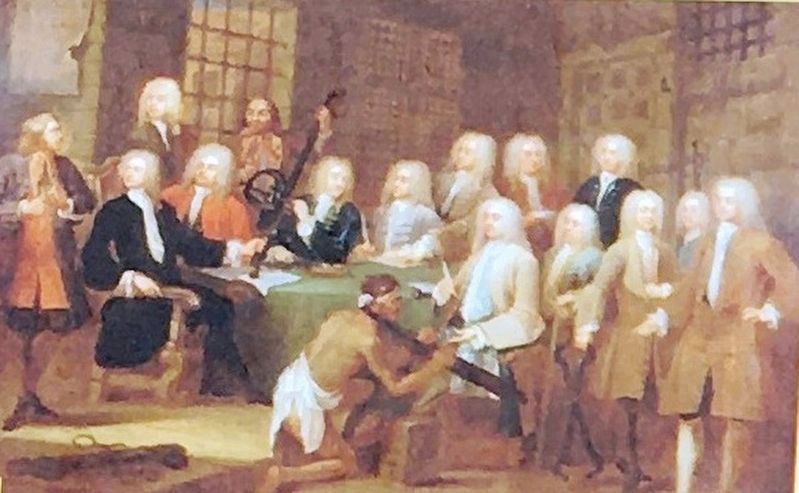
Photographed By Brandon D Cross, August 23, 2020
4. (Bottom Left): The Gaols Committee of the House of Commons, 1789
NPG 926 The Gaols Committee’ (includes Henry Howard, 4th Earl of Carlisle, John
Perceval, 1st Earl of Egmont; Sir Andrew Fountaine; Sir Archibald Grant, 2nd Br;
William Hacks; James Edward Oglethorpe; Arthur Onslow; Edward Stables; Sir James Thornhill; oil on canvas, circa 1729, “National Portrait Gallery” London
Also see . . . Signature Squares of Brunswick. (Submitted on August 31, 2020, by Brandon D Cross of Flagler Beach, Florida.)
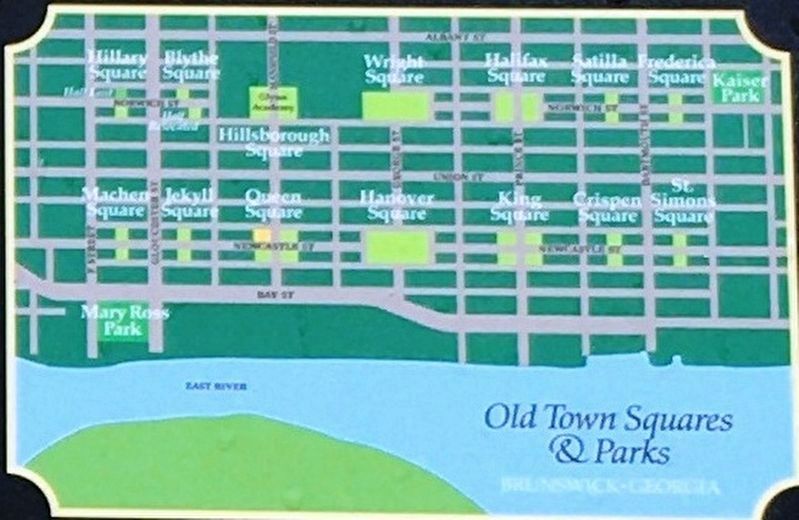
Photographed By Brandon D Cross, August 23, 2020
9. 9.(Bottom Right): 1771 Town Plat “the Oglethorpe Plan”
In 1771, the city of Brunswick, Georgia was laid out according to “the Oglethorpe plan,” named after the colony’s founder, General James Edward Oglethorpe . The design featured a grid of 14 large and 14 small squares. The intention of the plan was to create permanent, park-like common areas throughout the city. The squares still bear their original names, which reveal Brunswick’s strong historic ties to England.
Credits. This page was last revised on December 21, 2022. It was originally submitted on August 31, 2020, by Brandon D Cross of Flagler Beach, Florida. This page has been viewed 172 times since then and 18 times this year. Last updated on December 20, 2022, by Carl Gordon Moore Jr. of North East, Maryland. Photos: 1, 2, 3, 4, 5, 6. submitted on August 31, 2020, by Brandon D Cross of Flagler Beach, Florida. 7, 8, 9. submitted on September 1, 2020, by Brandon D Cross of Flagler Beach, Florida. 10. submitted on September 3, 2020, by Brandon D Cross of Flagler Beach, Florida. • J. Makali Bruton was the editor who published this page.
